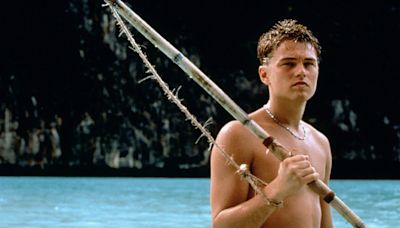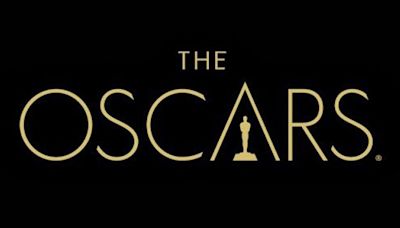Search results
The train
- John Ford came to Hollywood following one of his brothers, an actor. Asked what brought him to Hollywood, he replied "the train".
www.imdb.com › name › nm0000406
John Ford came to Hollywood following one of his brothers, an actor. Asked what brought him to Hollywood, he replied "the train". He became one of the most respected directors in the business, in spite of being known for his westerns, which were not considered "serious" film.
- February 1, 1894
- August 31, 1973
People also ask
What brought John Ford to Hollywood?
How did John Ford influence American culture?
How many films did John Ford make?
Who starred in John Ford?
He is regarded as one of the most important and influential filmmakers during the Golden Age of Hollywood, [3] and was one of the first American directors to be recognized as an auteur. [4][5] In a career of more than 50 years, he directed over 130 films between 1917 and 1970 (although most of his silent films are now lost), and received six Aca...
John Ford came to Hollywood following one of his brothers, an actor. Asked what brought him to Hollywood, he replied "the train". He became one of the most respected directors in the business, in spite of being known for his westerns, which were not considered "serious" film.
- January 1, 1
- Cape Elizabeth, Maine, USA
- January 1, 1
- Palm Desert, California, USA
John Ford, one of the most influential filmmakers in American cinema, had a humble beginning in his early years. He was born in Maine in 1894 and moved to Hollywood in the early 1920s to pursue a career in the film industry.
- Overview
- Early life and silent-film career
- 1930s to World War II
- Postwar career
John Ford (born February 1, 1894, Cape Elizabeth, Maine, U.S.—died August 31, 1973, Palm Desert, California) iconic American film director, best known today for his westerns, though none of the films that won him the Academy Award for best direction—The Informer (1935), The Grapes of Wrath (1940), How Green Was My Valley (1941), and The Quiet Man (...
Ford was an Irish American and a New Englander, born to immigrant parents. He began his movie work in the silent era, serving as a jack-of-all-trades apprentice on many early pictures made by his actor-director brother Francis. By the end of the silents, Ford had directed more than 60 films (many “two-reelers” and a handful of films approaching what is now considered feature length), including dozens of westerns, often starring Harry Carey in the persona of “Cheyenne Harry,” a hard-drinking, often down-at-the-heels outlaw with a weakness for helping the defenseless. Ford proved able to satisfy the expectations of producers and audiences alike while adding small touches, whether gritty or sentimental, that gave his films an extra human dimension often lacking in the generic programmers of the day. He gambled with his reputation as an efficient, no-nonsense helmer-for-hire in the production of The Iron Horse (1924), his over-budget schedule-busting epic about the construction of the transcontinental railroad in the 1860s. Ford was pressured by the studio but allowed to finish, and the film became a huge financial and critical success, placing Ford in the Olympian company of predecessors D.W. Griffith and Cecil B. DeMille.
Britannica Quiz
And then came the talkies. Ford made another 60-plus sound-era features, a format that introduced a tension between the visual storyteller and the loquacious, poetically sentimental Irish yarn-spinner. Acting styles age more rapidly than visual mechanics, and works highly regarded at the time—such as The Informer (1935) and The Long Voyage Home (1940)—are less valued today than Ford’s generically terse westerns. Although Ford was often only a contract director who did his best with the material at hand, he recognized and valued a good story and, when possible, bought literary material and developed it with able screenwriters. When the budget allowed, he was able to work on a large canvas, placing his characters—singly or in groups—as elements in huge indifferent, if not hostile, natural settings. This approach is as effective in The Lost Patrol (1934) or The Prisoner of Shark Island (1936) as it is in the westerns that he shot in Utah and Arizona’s Monument Valley. Ford’s stately, carefully staged and composed medium and long shots of groups of characters interacting (with a relatively spare use of “star” close-ups) are deceptively simple. Famous for shooting few takes and no extraneous angles, Ford was notoriously stingy with information for the cast or crew regarding what would be happening next or why, and he was quick to publicly chastise those who dared to ask for it. His contrariness became a personal trademark. Ford was likely to play either the erudite student of history and culture or the blunt, no-frills working stiff whenever insulted that the opposite was supposed of him.
World War II was a watershed for Ford: he finally had the opportunity (or perhaps the inescapable duty) to live up to the masculine code he had helped define in his many films. Already in the Naval Reserve, he made films for the Navy Department’s photographic unit—two of which, The Battle of Midway (1942) and December 7th (1943), won Academy Awards for best documentary—and, working for the Office of Strategic Services, he was present at Omaha Beach on D-Day. Having been personally under fire and a witness to slaughter, he was so proud of his military service and status that his gravestone memorializes him as Admiral John Ford (he had left active service with the rank of captain and was later made honorary rear admiral). His one true World War II movie, They Were Expendable (1945), is a remarkable film, though he sometimes derided it. It chronicles an American defeat (the rout of U.S. troops by the Japanese in the Philippines) and contains the quintessential Ford character scene. A group of officers considered “vital” to the war effort sit on a transport plane, waiting to be flown out of the debacle to relative safety. At the very last moment, a pair of more valued men arrive, and two of the junior officers are asked to step out of the plane (and most likely into what became known as the Bataan Death March). They do so quietly, uncomplaining, willing to sacrifice personal survival for the common good. Ford, acutely aware of the sham aspect of Hollywood mythmaking, underplays the moment that provides the backbone of the film.
The postwar Ford took care of some debts and omissions. Cheyenne Autumn (1964) recognizes the brutal treatment he believed the various American Indian nations had suffered at the hands of white men, Sergeant Rutledge (1960) involves buffalo soldiers, the African American troops who fought in the West, and Ford overtly challenged his own legacy in The Man Who Shot Liberty Valance (1962). Without a lavish budget and shot in black and white, this film is somewhat visually claustrophobic but notable in how the persona developed by John Wayne in the many films he starred in for Ford hardened over the years. Gone is grinning Ringo Kid from Stagecoach (1939), who marches down the street to face the three Plummer brothers in a “fair fight.” In his place, at the end of Liberty Valance, Wayne’s Tom Doniphon bushwhacks Lee Marvin’s Liberty from a side street, shot-gunning him like a rabid dog, and then allows the book-toting Easterner played by James Stewart, who has stolen the love of Doniphon’s life, to take credit for killing the outlaw in a face-to-face gunfight. Doniphon sinks into alcohol and misery while Stewart’s character launches a successful political career. There is no cynicism here—both characters are presented as brave, honourable men—but the idea of silent sacrifice to a notion of “what’s right” receives here its most extreme celebration in all of Ford’s work, and the film’s famous tagline (“This is the West, sir—when the legend becomes fact, print the legend”) does not seem ironic. The master storyteller was comfortable with the public’s hunger for defining myths.
Though a maker of stars, Ford was never—if his one directorial dance with Shirley Temple in Wee Willie Winkie (1937) is discounted—a maker of star vehicles. This is no more apparent than in his Wagon Master (1950). Its protagonists are a pair of cowpokes played by the familiar character actors Ben Johnson and Harry Carey, Jr., amiable and uncomplicated. Their heroic moment is both reluctant and over in a flash, leaving viewers to assume that they go back to being simple cowpokes. Frontier values found in common men, in a situation that is morally clear-cut—this was the attraction of the western in the first half of the 20th century. As that simple comforting vision grew less viable in the years of McCarthyism, the civil rights movement, and the Vietnam War, a more nihilistic western evolved, finding its iconic figure in Clint Eastwood’s “Man with No Name.” Although Ford drifted from being a Franklin D. Roosevelt Democrat to a Richard M. Nixon Republican, his films were neither reactionary nor even basically conservative, and never, ever, amoral. More attracted to questions of individual character than collective politics or cultural shifts, Ford helped create an archetypical code of masculine ethics and behaviour that has profoundly affected the American psyche.
Exclusive academic rate for students! Save 67% on Britannica Premium.
Learn More
John Ford entered the peak of his career during the classic Hollywood studio era of the 1930s-1950s. He directed some of his most acclaimed and influential films during this period, cementing his reputation as one of the greatest American filmmakers.
John Ford with portrait and Academy Award, circa 1946. John Ford (1894–1973) was an American film director whose career spanned from 1913 to 1971. [1] During this time he directed more than 130 films; however, nearly all of his silent films are lost.




